West Texas Ranchers Threaten Lawsuits Over Fracking


West Texas’s energy sector is booming again, thanks largely to advancements in hydraulic fracturing (fracking). The Permian Basin, which by several accounts is the world’s second-largest oil field, still has plenty of oil and gas lying beneath its surface. Much of it still untapped because for decades, it has been difficult to extract. In recent years, however, fracking has made those deposits easier to harvest. And as explained recently in the Houston Chronicle, compared to other shale oil fields, that energy is relatively cost-effective to extract, even during this stubborn three-year spell of low fuel prices.
Extracting that oil, on one hand, sounds like a great way to revitalize many economically struggling communities. As a result, established companies and startups alike seek to build pipelines that would transport fuel and water alike across long distances in order to tap into these resources.
But companies leading this effort, including the Dan A. Hughes Company, are running into opposition by more and more citizens, ranchers, farmers and environmentalists – all of whom share a bevy of worries, from the lack of water for cattle and crops to potential threats that could be inflicted on popular recreation areas such as Balmorhea State Park. They cite concerns over water scarcity, as estimates have suggested the amount of water harvested to support the West Texas fracking boom has surged from 5 billion gallons in 2011 to almost 30 billion gallons last year – and that amount could double by the end of this year and more than triple by the end of this decade. Ranchers and farmers fear that the Permian Basin’s aquifers, most of which are believed to be interconnected, could all dry up as that water is diverted elsewhere - leaving ranches, farms and communities dry.
Is there a path towards preserving the long-term sustainability of the West Texas landscape while allowing for growth in the region’s energy sector?
According to the Environmental Defense Fund (EDF), there very well could be a solution.
EDF has noted that across all of Texas, 1 percent of the state’s freshwater supplies is used for fracturing. But in more arid regions such as those in West Texas, as much as 90 percent of local freshwater is diverted for gas and oil extraction.
The answer would be to reuse the brackish water that is the byproduct of fracking operations. Adopting such a practice could help reduce the strain on local freshwater sources. EDF, however, says it could be done with one caveat: that such water stays within an oil and gas fracking operation. As of now, any science that would allow this water to be retreated for other purposes such as agriculture does not yet exist. The solution is not a perfect one, and EDF insists that while in-field recycling is the most economically and environmentally viable option, more research needs to be done before considering this spent water for other uses.
This question is not solely limited to Texas: EDF suggests that nationwide, oil and gas companies generate 800 billion gallons of brackish, toxic and unusable wastewater annually. Developing new ways to recycle water would not only accelerate job growth, but help Texas and other water-stressed states cope with the stubborn water-energy nexus that highlights the need for grooming a modern economy that not only is low-carbon, but also low-water.
Image credit: Paul Lowry/Flickr
The Two Most Important Pages of Your Sustainability Report


By Tyler Wagner
A version of this article previously appeared on thinkPARALLAX
The team at thinkPARALLAX has done a lot of thinking, and writing, over the years about the broad topic of corporate sustainability and citizenship reporting. (See previous posts by Ann Tartre and Jeff Sutton.) But for this post, I’m going to narrow the focus to what I believe are the two most important pages of your report: the CEO Letter.
Why the CEO letter?
Simply put: It’s concise, it comes from the top, and (if properly constructed) it provides readers with critical insight into your citizenship approach — all in the span of one or two, hopefully not three, pages.
It’s like the CliffsNotes version of your company’s citizenship story. Which is great for people like me, who are happy to download and skim a report, but who don’t have the time, interest, or caffeine tolerance required to read a report from cover to cover.
Aside from the brevity, what I find interesting, and the reason that I skip straight to the CEO letter anytime I’m reviewing a report, is that it gives me answers to three burning questions:
- How is citizenship defined?
- What is the purpose of citizenship?
- What is the role of leadership in relation to citizenship?
Let’s unpack each of these topics a bit further.
Citizenship concept
A good CEO letter should give me a clear picture of your concept of sustainability.
What I’m talking about here are definitions and scope. As in: How does your organization define key terms? And how broad (or narrow) is your view of citizenship?
This is an area where the lexicon of sustainability reporting can be confusing – the same words can mean different things to different people.
Take the word “sustainability” for example. While Company A may use the term to refer narrowly to environmental impact; Company B uses it to refer to environmental and social impact; and Company C may take a more literal approach, using “sustainability” to refer to the long-term viability of their business.
Whether you produce a “citizenship report,” “sustainability report” or “corporate responsibility report,” don’t allow semantics to be a stumbling block for your readers.
That doesn’t mean the CEO letter should read like a dictionary entry, but a good letter should remove any ambiguity as far as how you’re using key terms, and the scope of activity that you view as integral to your citizenship efforts.
Strategic intent
Sustainability is a journey, and as companies progress through various stages of citizenship development, it’s natural to expect their strategy to evolve over time.
A good CEO letter should make it clear what the purpose of a company’s citizenship efforts are, and what he or she hopes to achieve. Are you focused on minimizing footprint and improving efficiency? Or are you leveraging sustainability as an opportunity for growth and innovation?
The best CEO letters show clear alignment between a company’s sustainability strategy and the overarching business strategy. If a company produces a separate annual financial report that also includes a CEO letter, I should be able to identify common themes in both letters.
And, it bears repeating here: The “three P’s” of people, planet, and performance are not a strategy. They may be suitable as broad focus-areas, and of course, reporting frameworks like GRI will divide content into these sections, but the “three P’s” say nothing about your plan of action or strategic aims.
Role of leadershipWhose job is sustainability? While most CEO letters won’t answer this question directly, a fair amount can be inferred from the way a CEO frames his or her work in relation to the company’s citizenship activity.
For example, if the CEO letter in the annual sustainability report is the only time the CEO is actually “talking” about sustainability, the chances are good that they’re paying lip-service to the topic as opposed to truly leading or championing the cause.
Conversely, if the letter emphasizes the ways in which sustainability can help realize the CEO’s ambitious vision for the company’s future, chances are good that leadership is more on top of things, and that sustainability is more deeply embedded in the business.
Conclusion
Having read more than a few CEO letters, I can say that while some are more enjoyable reading than others, most tend to follow a familiar formula. Usually, it goes something like this:
“20___ was a great year, with both successes and challenges….we’ve got a lot to be proud of but there’s more to accomplish….yadda yadda yadda.”
But a good CEO letter does more than summarize the previous year’s successes and challenges; it sheds some light on these three key questions:
- How do we define citizenship?
- What is our strategy?
- What role do I (or does leadership) play in achieving our strategic aims?
A CEO letter is often the only section of a report that I will read in its entirety; so for me, and readers like me, failing to address these topics would be a big missed opportunity.
What do you think? Do you skip straight to the CEO letter? A different section of the report entirely? What makes for a good CEO letter?
Tyler Wagner is Director of Client Strategy at thinkPARALLAX.
To Create Leaders, Challenge Employees to Volunteer
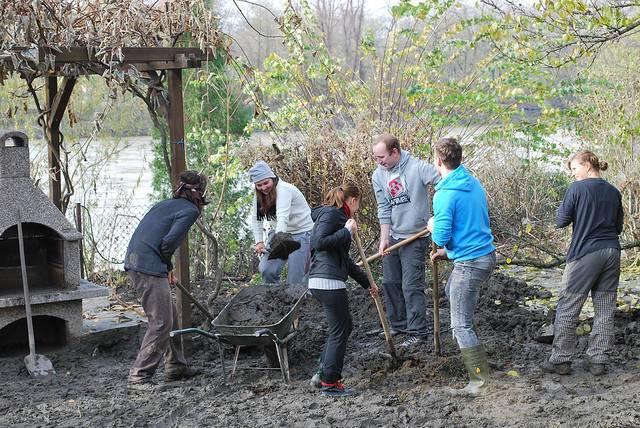

To gain practical skills for sustainability management, join us at the COMMIT! Forum in DC October 11-12 2017
A company's corporate social responsibility (CSR) program says a lot about its business values. In today's business world, companies are judged not just by the quality of products and services they offer but how willing they are to invest in the communities they call home, and how engaged both their workforce is in demonstrating those values.
And as one international corporation has discovered, corporate leadership engagement is often critical to ensuring a vibrant and successful CSR strategy.
Alexander Mann Solutions, which was founded by Rosaleen Blair in 1996, is considered a global leader in talent acquisition and management. Today, it’s also known as a company that demonstrates CSR values by showcasing its own – clear to the top of its corporate leadership.
“[At] Alexander Mann Solutions we are very lucky to have a very integrated corporate social responsibility program, which supports and aligns perfectly with our business strategy of growth and delighting clients,” said Tim Campbell, who serves as Alexander Mann Solution’s client service manager of Emerging Talent and Global Citizenship.
According to Campbell, it’s the company’s focus on senior management involvement that makes its CSR program click. That, and the CEO, whose own people skills and CSR focus help set the standard for community involvement.
“I think we are lucky here at Alexander Mann Solutions where we have a very engaged C-suite board who all understand and support [our] corporate social responsibility program. And having a charismatic chief executive who has always been so impassioned about supporting people,” said Campbell, is part of what drives the success of that leadership.
Campbell said he feels the company’s own objectives, to “match talent with opportunity” offered a dynamic opportunity for a successful CSR program that essentially offers very similar goals and relies on company-wide participation.
“[When] we were thinking about engaging our business with a corporate social responsibility program, the first point obviously was to make sure our leaders, our senior management were brought in because they are the ones that are going to spread it throughout our company,” said Campbell.
Outside programs like the UN Global Compact, which encourages and mentors sustainable business practices, became a guidepost for the company as it developed its tailor-made CSR program.
For Alexander Mann Solutions, Campbell said, the secret to company-wide engagement when it came to community volunteering was encouraging autonomy. Employees, including senior management, are given one paid day a year to volunteer in their community. But it’s up to them to decide the best value for that day.
“Most organizations will encourage their employees to go and do some work with a registered charity,” explained Campbell. “It’s easy to monitor [and] they can see the return in investment.
At Alexander Mann Solutions, however, employees are given the option to volunteer where and however they choose.
“[You] don’t have to go and support a registered charity, because you might actually have a neighbor who needs [help] shopping, or you might actually have a school that needs somebody to do some reading for an afternoon,” said Campbell, who added that by instilling trust in its workers, the company is actually delivering a teachable moment about its four work values: to be distinctive, to be passionate to retain authenticity and to be brave.
“For us, the relationship we have with our people at Alexander Mann Solutions is much more based on trust and belief and integrity.”
The system works, said Campbell, because it takes individuality into account, recognizing that employee situations are often as diverse as their interests. Some workers in Cleveland, for example, work remotely and live remotely. Encouraging them to use their talents in their own community as they prefer keeps employees engaged.
The company also utilizes a three-prong approach for recognizing employee activism in their communities:
- It provides an internal communications network where employees (and their managers) can post information about new volunteer projects (for example, one employee raised money for cancer patients with a bike ride and posted the news on the company’s internal communications site to drive support).
- The CEO regularly reviews CSR projects and promotes information about what offices and individuals are doing;
- And the company integrates CSR commitments into its yearly appraisal system, “where the [team managers] are asked to check up and reference what people have done with their volunteering time to make sure that we really get that spread across our business,” explained Campbell. “We actually have tied it into people’s rewards and recognition. That’s how important we see the whole work, the engagement of the citizenship of people we work with.”
For Campbell, discovering the incentives that motivate and keep people engaged in good values comes naturally. He is also the founder of the UK nonprofit Bright Ideas Trust, which helps individuals from underserved and disadvantaged communities develop their own entrepreneurial aspirations. In 2014 he was presented with the honors of MBE (Member of the Most Excellent Order of the British Empire) for his contributions to the enterprise culture.
Campbell acknowledged that not all businesses are fortunate enough to have a senior management team that has from the start, had the talents and skill sets to build a CSR community. For small companies and those still trying to figure out how to build their own program, he has one key piece of advice: Leverage the hidden skills of senior leaders and incorporate them into a budding CSR program.
Companies like Unilever and Allianz (an insurance company based in Australia with global partners) have found ways to jump-start their own CSR programs by seeking out the skill sets of their senior managers and building a portfolio of leadership opportunities.
“[They] have taken clear guidance around supporting projects where their skills will invite you to the initiatives that they support,” said Campbell. Driving that growth is both the desire of consumers to see more corporate engagement at all levels of the companies they support, and the determination of young talent to join companies that are willing to align their business values with their community commitments.
“I think what organizations are clearly finding now is that employees, or potential employees are demanding much more of their employers before they decide to join.” And that yearning from prospective employees can actually have value for companies that want to build a dynamic CSR program and know their new hires (and management-in-training) will help lead the way.
For Alexander Mann Solutions, said Campbell, instituting a solid program that builds engagement with its communities starts with instilling trust in its employees – from the top down.
“The reason we give people a day off to volunteer, the reason have citizenship week where we have a weekend in September every single year where the whole of our business is encouraged to do good, is because we honestly believe that we get more back if people are engaged, are able to bring their whole selves to work and do good around issues that they are passionate about. And for us, that is what our values state, we have seen the returns, we have seen positivity in our internal surveys and we have seen the productivity that has come out from the people that have been helped.”
Bartercard promotes SME trading in Europe

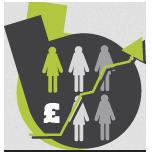
Tesla Mum on Model 3 Battery Tech, Researchers Reverse Engineer
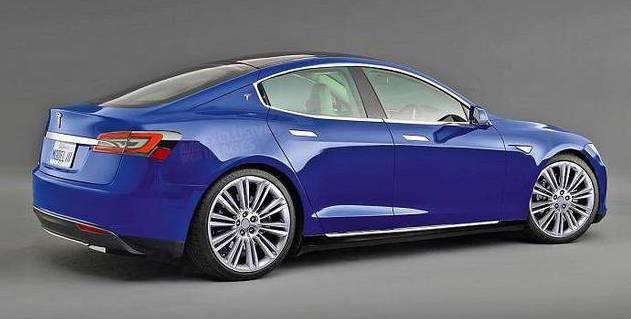

Tesla has released a lot of information over the specs of its much-anticipated Model 3, but the company has been largely silent on the electric car’s most important component: the battery.
Not to worry: researchers who have been intrigued by the car’s 220-mile range, along with the newly announced option for a 310-mile range Model 3, have been doing an admirable job cracking the battery’s code.
According to Axios, a Carnegie-Mellon University professor has concluded that that the standard Model 3’s battery is powered by a 53.5 kWh battery, which would make it 11 percent smaller than the smallest version used within the company’s Model S series. Those estimates are aligned with most Tesla aficionados, who have noted that the car’s features have more than enough potential to be a game-changer within the global automotive sector.
The specs have been scrutinized as the Environmental Protection Agency (EPA) released its certification for the Model 3. That report concluded that the standard Model 3’s battery has a total voltage of 230 volts, while the long-range version boasts 350 volts.
Those who have dismissed electric vehicles’ potential often do so ever the size, weight and expense of their battery packs, even though they have become lighter, smaller and more efficient in recent years. But one reason why the Model 3 stands out compared to many of its competitors is due to its performance driving against the wind.
Months before Tesla’s Model 3 first rolled off the assembly line at its Fremont, California plant, the company reportedly focused on tweaking the car’s design so it could have the lowest possible aerodynamic drag coefficient. In November 2015, Green Car Reports noted that Tesla had been aiming for a drag coefficient at or near 0.20, which had the potential to make the car the most aerodynamic vehicle ever assembled by mass production.
Tesla has come tantalizingly close, according to Carnegie-Mellon’s Venkat Viswanathan in his interview with Axios. He noted that the Model 3’s drag coefficient measures at 0.23, a notch below the Model S’s 0.24. Compare that to the Nissan Leaf, which measures its 2016 model at 0.28 – an improvement from its 2012 model, which Car and Driver measured at 0.32. A low drag coefficient not only often makes for a sleeker car, but it allows for a car to generate more power out of a smaller battery. That design advancement is just another way in which Tesla has out-designed the competition, from Mercedes to General Motors to Toyota.
Despite the hype over the Model 3’s potential to truly become the electric vehicle for the masses, the company and its CEO, Elon Musk, are still at risk of production not keeping up with demand. A failure to crank out the promised thousands of cars a week could turn off investors’ enthusiasm for the company, the stock of which had achieved a higher valuation than U.S. automakers GM and Ford.
Yesterday, Tesla announced it would raise approximately $1.5 billion via junk bonds, the high-yield but high-risk securities often attractive to investors. But that debt will be already piled on top of the debt Tesla accumulated during last year’s acquisition of SolarCity, in addition to the $1.4 billion convertible debt offering Tesla offered this spring.
Image credit: Peter Stevens/Flickr
98-Year Old Hawaiian Company Plunges Into The Hydrogen Future
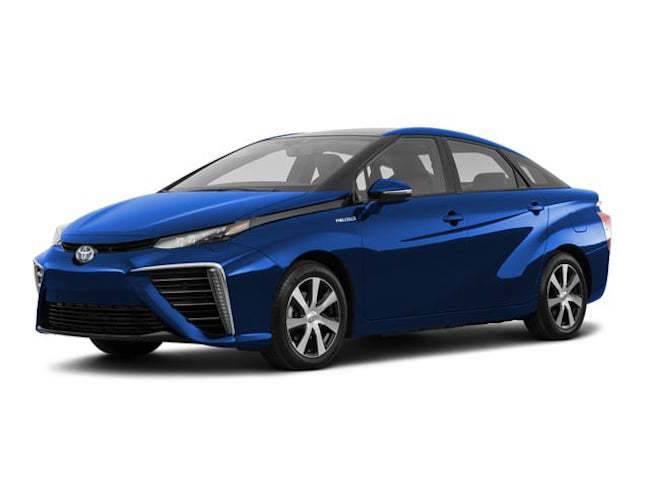

Hydrogen cars are having a tough time breaking into the mainstream market, partly due to the lack of fueling stations. That could change soon if a new project by the Hawaii-based company Servco works out. Servco is leaving nothing to chance: It's building Hawaii's first public hydrogen fueling station, and also selling the Toyota Mirai fuel cell EV to go with it.
So, will the gamble pay off?
Hydrogen is a risky bet...
More and more auto companies are willing to manufacture fuel cell EVs (FCEVs), but they are currently stuck in a classic chicken-and-egg loop. There are very few FCEVs on the road, so there is little incentive to build hydrogen fuel stations. Few drivers are willing to invest in a car that they can't fuel up conveniently, so it's back to square one.
That logjam is difficult to break for several reasons. FCEVs represent new, unfamiliar technology, they are generally more expensive than comparable gas-powered cars, and they are facing stiff competition from battery EVs for the zero emission market.
On top of that, hydrogen fuel stations are complex facilities that cost far more than a typical gas pump or EV charging station.
...but Servco has a good hand to play...
The odds seemed stacked against Servco, but the company does have several factors working in its favor.
One of those is corporate culture. Servco got its start as a two-car garage back in 1919 and grew into on of the top companies in the automotive sector. Automotive News slotted Servco into the #26 place in its 2016 list of top 150 dealership groups based on unit sales of new vehicles, and it is rated third among large employers in the 2017 Hawaii Business Magazine list of best large employers.
One key to Servco's success over 98 years is its ability to spot and resolve bottlenecks that keep potential customers apart from the things they want. That's a legacy of the company's founder Peter Funkunga, as described in a brief history on the company's website:
Back then, during depression–era Hawaii, families were having difficulty paying cash for purchase. Mr. Fukunaga responded by creating an affiliate to help customers finance their purchases. Today, we continue to demonstrate those principles through the brands and products we represent, and supporting them with excellent customer service.
Another indicator that Servco has placed its hydrogen bet carefully is its success in transferring lessons from the automotive sector into another significant aspect of big-ticket consumer purchasing, kitchen appliances and bath accessories.
...a good place to play it in...
The auto market in Hawaii also creates a favorable environment for car sales in general, and FCEVs in particular.
Back in 2014, Hawaii Business Magazine highlighted a unique trend in the state's motoring habits. Driving dropped by 7 percent across the US after peaking in 2005, a trend that is especially pronounced among millennials. However, driving has continued to climb in Hawaii.
A number of factors contribute to the trend, including the long commuting times that are typical of areas where expensive urban core real estate pushes more workers to live in outer suburbs and rural areas.
Hawaii's tourism industry also plays a role, as does the state's relatively high reliance on private schools that don't transport students by bus.
Mass transit in the state is improving and bicycling is also gaining popularity, so some industry observers don't expect the total number of cars in Hawaii to continue increasing (bearing that out, sales dipped in 2016).
However, if those who drive continue to spend more time behind the wheel, that could translate into greater demand for cars that can go longer between fill-ups. That's where FCEVs have two important advantages over their battery EV cousins: range and refill speed.
The Mirai, for example, has a range of 312 miles according to fuel economy information compiled by the U.S. Environmental Protection Agency. That handily beats the range of 60-120 miles that EPA describes for typical battery EVs.
Some battery EV models are getting into the 200-300 mile range, and FCEVs begin to lose the range advantage at the upper end of that scale. However, they still have have an edge in terms of charging times.
FCEVs fuel up quickly, just like conventional cars. New technology has whittled down the time it takes to fully charge an EV battery, but even today's fast-charging stations take significantly longer than a hydrogen fill-up.
According to the Associated Press, Servco is anticipating that the new fueling station will begin operating in 2018, at which time it will have a fleet of Mirai's ready for eager customers at a price in the $50,000 range with free fuel for three years thrown in.
Servco also plans to make the station available to any other fuel cell EV, including the growing number of fuel cell buses in the state, helping to generate good will and publicity.
Also helping on the public relations side is the company's long relationship with Toyota, which has devoted much time, money and energy to promote the Mirai. Toyota is looking beyond autos to envision entire communities powered by hydrogen.
...and the Hawaii deck is stacked in favor of hydrogen.
One additional factor that makes Servco's hydrogen gamble a good bet is Hawaii's emerging hydrogen culture.
Hawaii has an ambitious plan to achieve 100 percent renewables for power production by 2045, and fuel cells are part of the mix.
To be clear, the 100 percent goal does not include transportation fuels, but fuel cells do come into the mix for non-mobile electricity generation. To that end, Hawaii has been aggressively pursuing hydrogen fuel, enlisting numerous stakeholders including private companies, federal agencies and academic institutions.
FCEVs are getting the benefit of the ripple effect, and current Governor David Ige is supporting the fuel cell movement with a vigorous publicity trend. He has been known to tool around in a Mirai, and he was the featured speaker at a groundbreaking ceremony for the new Servco station last week.
All that hard work is paying off. Last year the Department of Energy produced a state-by-state rating of hydrogen and fuel cell activity, and Hawaii came in fifth behind California, Connecticut, New York and Colorado. That's pretty impressive for a state that came in 40th for population as of last year.
One of the points highlighted by the Energy Department was Toyota's decision to tap Hawaii as one of the first two U.S. states to receive deliveries of the Mirai (California was the first) in 2016.
DOE also noted the plans for the new Servco station, and the use of hydrogen for FCEVs at two U.S. military bases.
Other activities described by DOE include a seaport fuel cell project spearheaded by Sandia National Laboratory and a new waste-to-energy system that could be modified for hydrogen production. The state also has plans in the works for fuel cell buses and a hybrid energy storage system at Hawaii Air National Guard F-22 Campus among other projects.
One especially interesting project is being undertaken by Blue Planet Research, consisting of a hydrogen energy storage system with a 100 percent renewable micro-grid.
That project dovetails with Blue Planet's ongoing NASA contract, which involves deploying hydrogen as energy storage in a Mars Habitat micro-grid.
As excitement builds over the potential for the U.S. to send a mission to Mars, hydrogen will carve a deeper niche in the public conversation. That new burst of attention could spill over to the FCEV market.
After all, if you can't go to Mars, the next best thing might be driving a Mirai.
Photo: 2017 Mirai FCEV sedan via Servco.
Lessons From a Beloved Brand: Be Prepared to Counter CSR-Related Protests
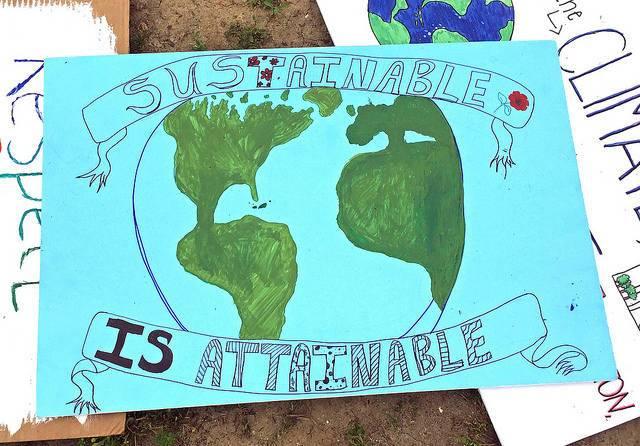

By Nancy Himmelfarb
Last week the Organic Consumers Association (OCA) reported that 10 out of 11 samples of Ben & Jerry’s ice cream contained glyphosate, the key ingredient in Roundup herbicide.
The findings were a surprise to many of us, but not to Ben & Jerry’s. The company responded quickly and appropriately, staving off any significant reputation damage. The company acknowledged OCA’s claims, stating additional facts related to the ice cream products’ safety, and reaffirming the company’s specific commitments on ingredient sourcing and safety. Ben & Jerry’s was prepared.
How can your company prepare for potential CSR-related protests from OCA or an organization like it? Here is your four-step roadmap:
1. Identify your key stakeholders / public influencers
Your stakeholder list should include all individuals and organizations that you can reasonably expect to care about the impacts of your company’s activities and products. Stakeholders are those that could be affected by your business or its products, or affect your ability to achieve business goals. Obvious examples are consumers, employees, shareholders or other owners / investors, supply chain companies (e.g., raw material suppliers, packagers, distributors, and retailers) and their employees, plus local communities.
Public influencers include advocacy groups such as Oxfam and other NGOs, investor networks (e.g., Ceres and CDP), industry-specific media outlets, bloggers, and relevant professionals (e.g., health professionals care about nutrition). Look at recent public campaigns to identify influential NGOs and bloggers in your industry and their target companies.
2. Identify “hot button” CSR issues
Make a list of the key CSR issues affecting your company and important to your key stakeholders and public influencers. Many of the issues should seem very obvious. If you are in the food industry, for example, you know that ingredient sourcing is front and center. Think of the “free-from” buzz words (chemicals, preservatives, hormones, GMOs, etc.); animal welfare; local; and fair trade. For additional guidance, check out social media chatter on your company and peer companies. Also research the opinions of the key stakeholders and relevant public influencers that focus on your industry and interact with consumers.
3. Assess risks related to each hot button CSR issue
Consider your company’s current operations vis-à-vis the hot button CSR issues and the intensity of negative (or potentially negative) opinions of key stakeholders and public influencers. You will want to pay closest attention to those CSR issues that are most material to your business in terms of impacts and exposure. Next, consider pre-emptively engaging with specific individuals and organizations to better understand their viewpoints, objectives, and desired timelines. Finally, use your informed prioritization to determine potential next steps for new or updated CSR policies and management strategies.
4. Prepare a position on each hot button CSR issue
Your company’s position needs to be authentic, credible (backed by facts and by third party certifications, where appropriate), understandable, and sharable. For example, if your company says that raw materials are locally-sourced, you need a specific definition of “local” and a list of supplier locations that fits with the definition. If your company claims that products contain only cage-free eggs, you need a published set of supplier standards that specified “cage-free”, assurances that suppliers can meet the standards, and a system for periodic verification.
Make sure that your company has a position on every hot button CSR issue, even if the intensity of known opinions is low and your position is, “this issue is not a current priority for us for the following reasons.” If you do this, you will not be blindsided by a blogger that might raise alarm bells based on a gap in information disclosed by your company. Of course, you do not need to accommodate all stakeholder viewpoints, or even all of the loudest ones, and you do not need to publicize your position on every issue. You only need to have a position and an explanation for why you are (or are not) operating in specific ways.
Bad things happen, and people will be critical of your company’s CSR performance regardless. However, if you follow this roadmap, you will be prepared and can respond swiftly with honesty and transparency to any challenges.
Despite Reforms, Some Children in Qatar Still Denied Citizenship


According to Human Rights Watch, the Middle East nation Qatar will still deny children of Qatari women and non-Qatari men the right to full citizenship, a privilege long granted to the children of Qatari men who marry non-citizens. As a result, while they can become permanent residents and have access to government health care and education, these children who were born to a Qatari mother but foreign father will still lack the most important tenant of citizenship: a passport.
While the wealthy oil kingdoms in the Middle East’s Gulf region like to think of themselves as forward-thinking and progressive societies, those nations’ performance on social progress often lag if the data mined goes beyond the self-congratulating press releases their governments issue on a frequent basis.
This is especially true of Qatar, which is embroiled in a bitter diplomatic row with its neighbors Saudi Arabia, Bahrain and the United Arab Emirates, as well with other regional powers. The situation would be even worse for the tiny country, if it were not for the fact that many observers say the accusations heaped on Qatar by its regional rivals are essentially coming from a pile of pots calling the other kettle black.
Despite the ongoing diplomatic crisis and the cuts in business ties between these nations, many companies still see plenty of business opportunities with the country of 2.5 million people. After all, Qatar still has copious reserves of oil and gas, and will have plenty to export once this diplomatic brouhaha is over. In the meantime, Qatar has embarked upon an ambitious plan to bolster its food production and security in the event similar crises occur in the future. Furthermore, despite the criticism heaped on the country as a result of its winning the right to host the 2022 FIFA World Cup, plenty of opportunities exist in construction, hospitality and sponsorships tied to soccer’s marquee event.
But companies that say human rights and fairness for all employees is important to their mission, yet are considering partnerships and investments in Qatar, may want to think twice before ramping up business relationships in the country. Human Rights Watch is one NGO that has routinely criticized the country’s government over its treatment of migrant workers, notably those who are building the country’s World Cup venues. The country has also been scrutinized over its dubious record of freedom of expression, approach towards women’s rights and anti-gay legislation.
Qatar’s cabinet claims recent immigration reforms are a step forward, but activists insist that the government is not going far enough to treat all residents fairly. In 2005 the Qatari government enacted a law allowing anyone living in the country for more than 25 years the right to apply for citizenship. But Human Rights Watch argues that the law is not applied fairly. “Qatar should allow children the right to acquire nationality on an equal basis from their mothers or their fathers,” said Rothna Begum, a Middle East women’s rights researcher at Human Rights Watch. “They could lead the way in correcting this discriminatory situation among Gulf countries.”
Qatar’s inconsistent execution of its residency laws is also putting the lives of some journalists in jeopardy. Human Right Watch said it recently interviewed a dozen employees of Al Jazeera, a Qatar-based news agency that has been on target of the country’s regional rivals. All of them, who are from Egypt, Saudi Arabia or Bahrain, have not been able to renew passports and now fear that they will lose their Qatari residency permits. If they return to their home countries, they are at risk of persecution due to their journalistic work for Al Jazeera.
Furthermore, even though it is in the midst of a region that accounts for its fair share of refugees and asylum seekers worldwide, Qatar has no laws on asylum, nor has it ratified the 1951 Refugee Convention. Therefore, while it is true that some of its neighbors’ accusations are unfair and hypocritical, if Qatar wants to accede to its coveted position as a global leader, it may want to join the world in guaranteeing fundamental human rights for all of its citizens – and respect the rights of citizens from outside its borders as well.
Image credit: Francisco Anzola/Flickr
The Economist Intelligence Unit global business survey finds 'strategic CSR'


Google's 'Sexist Manifesto' Bring Diversity's Real Challenges to Light
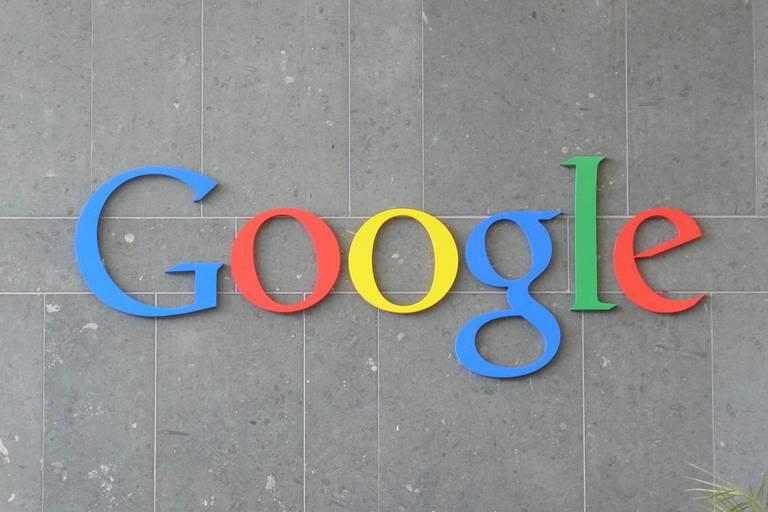

A leaked memo at Google that strives to address hot-button issues like why women shouldn't be hired as engineers is galvanizing outrage at the company. The "sexist manifesto," as some are calling it, is believed to have been written by an engineer within the company. It was published by Motherboard on Saturday and immediately went viral.
Within hours, the blow-back from the manifesto had forced Google's brand-new diversity manager, Danielle Brown and VP of engineering Ari Balogh to issue public statements. At least one female engineer had threatened to quit in response to the memo.
"Part of building an open, inclusive environment means fostering a culture in which those with alternative views, including different political views, feel safe sharing their opinions," said Brown, noting that she was still uncomfortable with the author's bombshell remarks. "[It's] not a viewpoint that I or this company endorses, promotes or encourages," she said.
The issue at hand is a 3,000-word "manifesto" that strives, in biological and emotional terms, to rationalize why women, who the author describes as having a greater level of "openness," gregariousness," "neuroticism" and "anxiety" wouldn't be suited for a job that depends on an individual's true yearning and capability for "status."
"We always ask why we don't see women in top leadership positions, but we never ask why we see so many men in these jobs," the author states, rationalizing that an off-shoot of those qualities is the apparent failing of having "a harder time negotiating salary, asking for raises, speaking up, and leading."
The author then goes on to offer some "suggestions," and it's fair to say the cures offered didn't seem to appease its readership -- both inside and outside of the emotionally-rattled company.
He suggested the company should stop alienating conservatives and look to improving its own biases toward political views and personality as a way of increasing diversity and that Google should focus on "psychological safety" instead of race or gender diversity.
If there's any positive takeaway from this latest statement on tech-industry diversity, it may be that the elephant in the room has most certainly been set free.
Techies are talking, and talking fast about diversity.
Former Google engineer Yonatan Zunger weighed in on the topic by dissecting the manifesto's points and why it was just as much an expository on the writer's lack of knowledge of engineering as his/her understanding of human nature.
"Engineering is not the art of building devices; it’s the art of fixing problems," said Zunger. "Essentially, engineering is all about cooperation, collaboration, and empathy for both your colleagues and your customers."
And acquiring that nuanced understanding, he said, takes more than practice "with hyper-optimizing an inner loop."
Which is why, in Zunger's view, the writer got the issues wrong. "All of these traits which the manifesto described as 'female' are the core traits which make someone successful at engineering," said Zunger. Being an experienced engineer takes sensitivity as much as the ability to work with minimum supervision.
But Zunger brought up another point that the tech community will probably be discussing a lot in the near future: The internal and external damage that was wrought by a memo that on the surface, was meant to communicate concerns, and ended up enraging readers.
And that's where Google may have its greatest challenge in the months to come.
While Zunger was unsparing in his criticism of the manifesto's author, the issue at the core of this debate is no different than what we see mirrored in other parts of the country at the moment: The challenge of how to align the need for tolerance with ensuring everyone has a fair opportunity for voice.
If there's any lesson that resonates loudest these days it is that change comes most easily when we aren't threatened. Apparently, the tech industry's next big challenge may be finding a way to ensure that those who were in the doors first know their jobs -- and yes, their socio-political views -- are just as safe as those lining up to be let in.
Flickr image: Carlos Luna